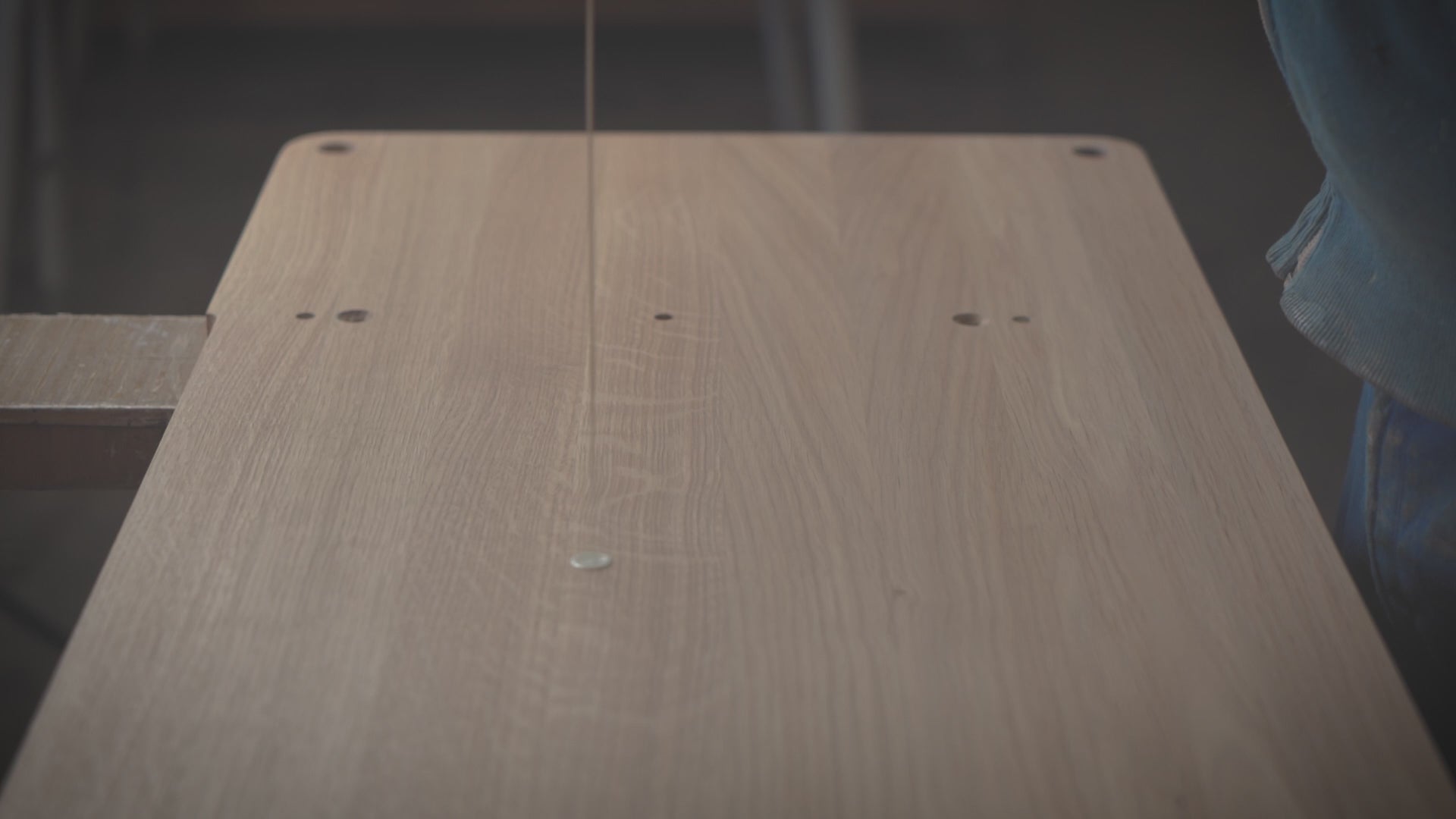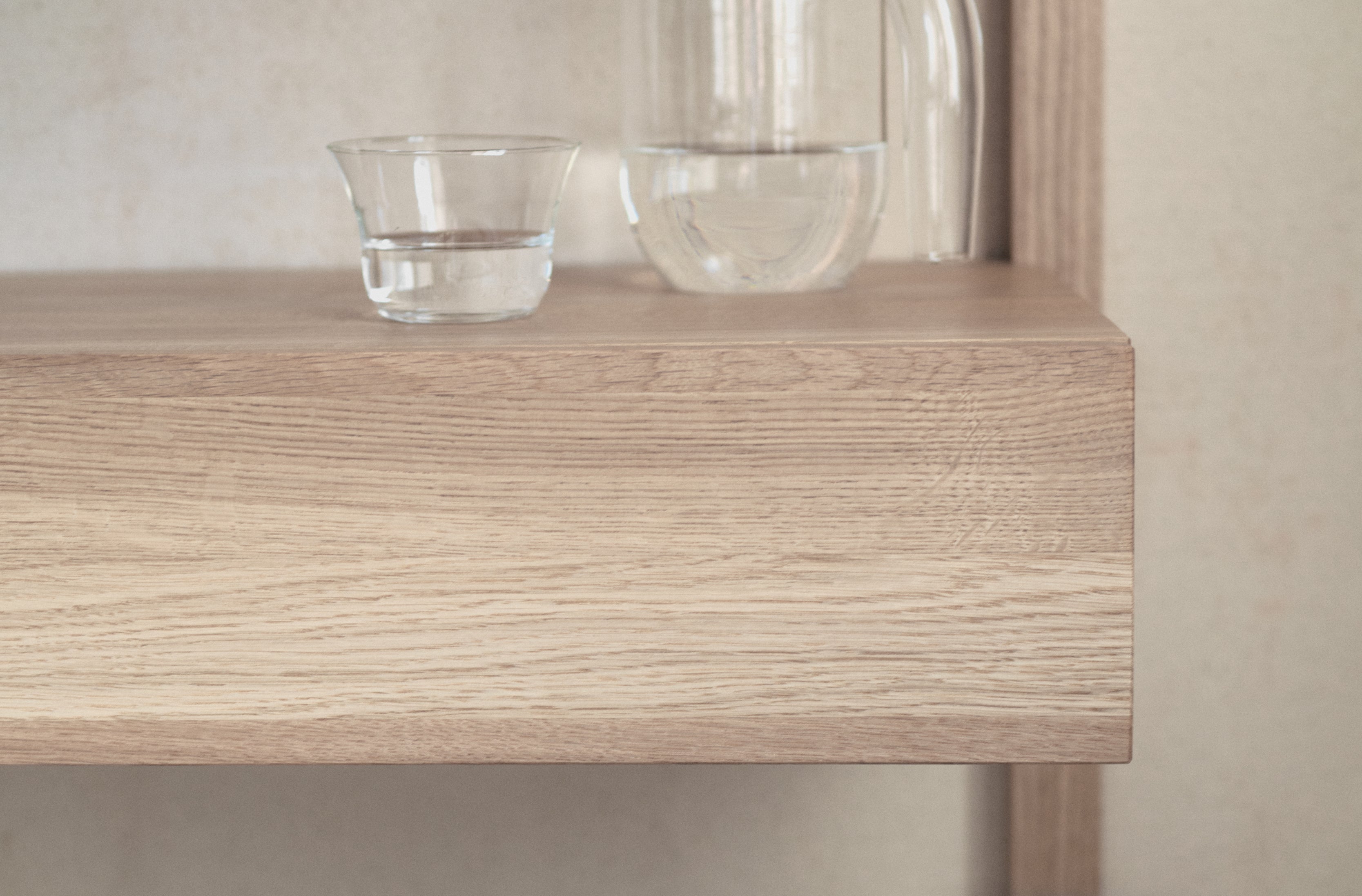We select our wood carefully. The material we use meets the highest standards of quality and sustainability. Most of our wood comes from sustainable forest management. Here you can learn more about our raw material and how to care for solid wood furniture.
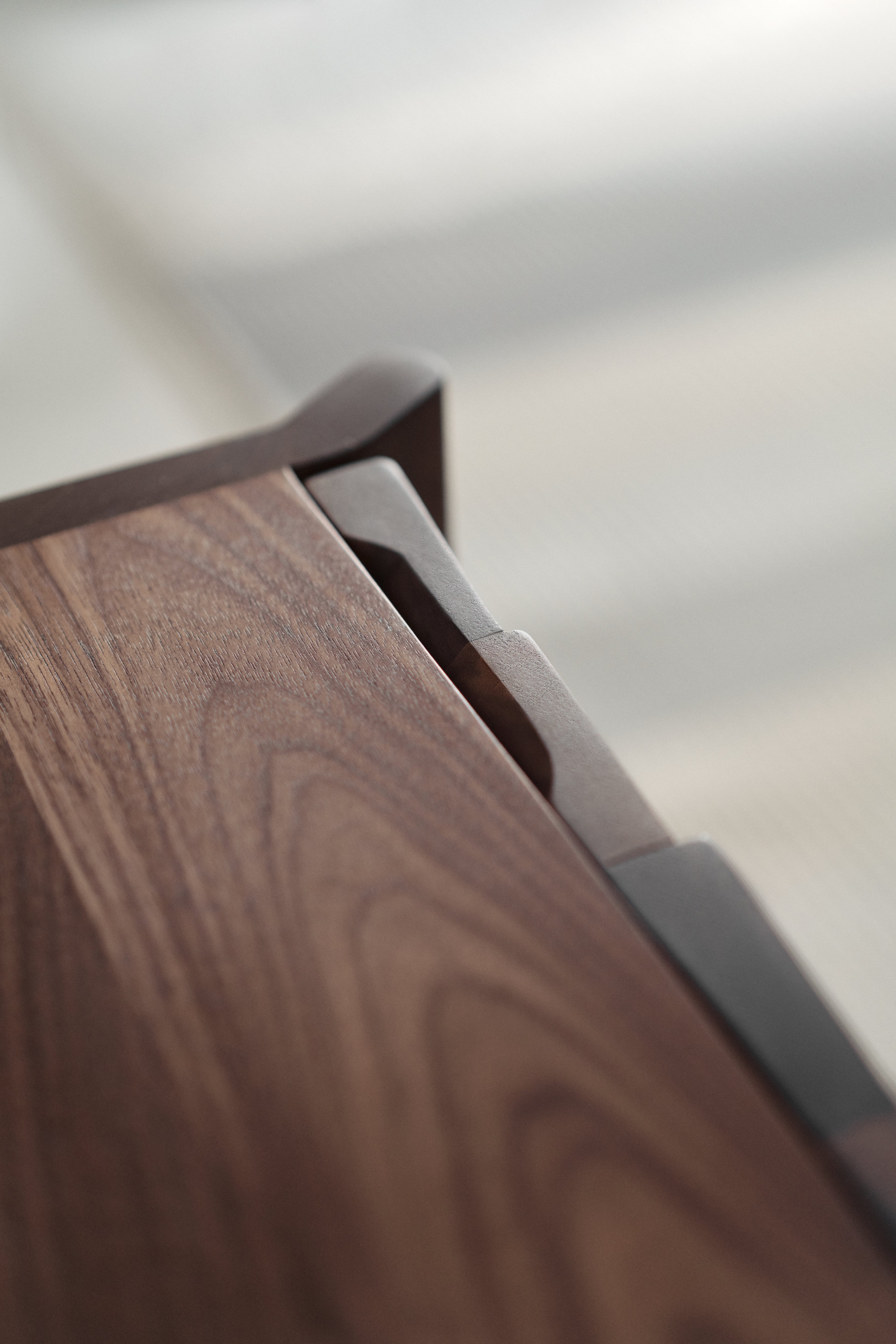
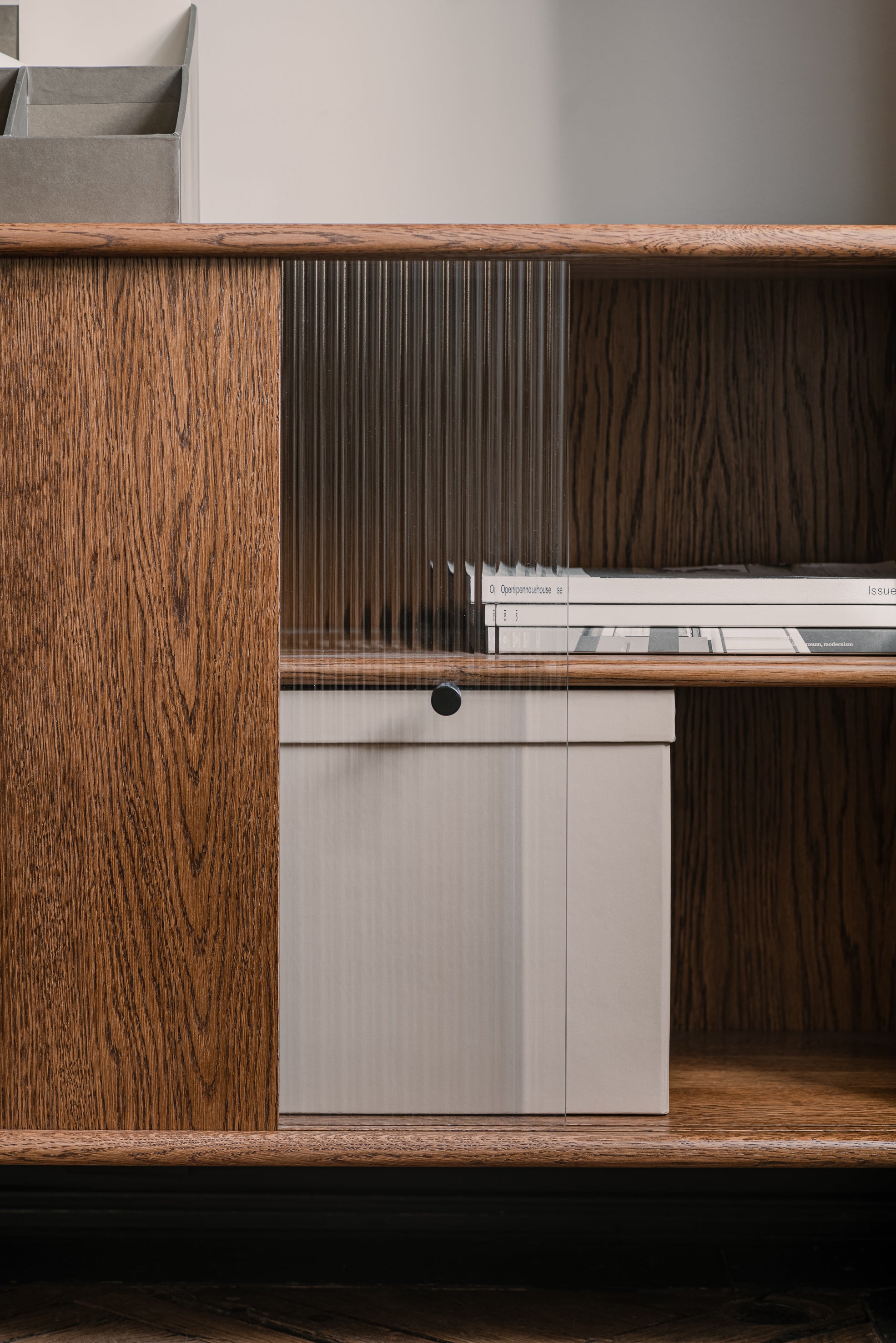
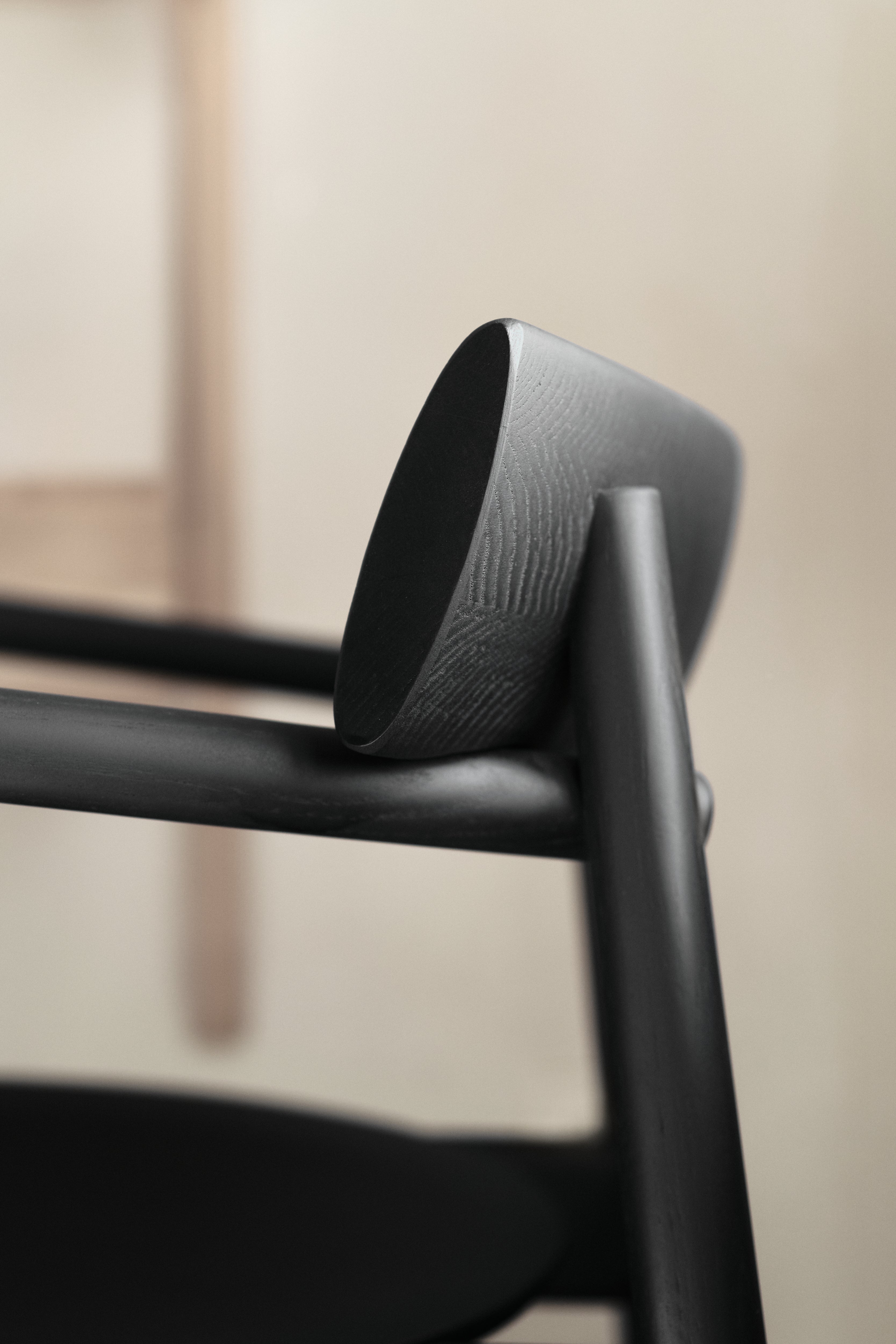
Care
SOLID WOOD & WAX OIL
Use
Solid wood lives and breathes. It has the full right to change its appearance and even a dimension. A big impact of this change is how and where the piece of furniture is located. Wood can shrink or change in a room depending on where you place it and how it is set up in the room. In other words: dry and warm room makes the wood dried out and shrinked, while humid air helps it to expand. It is also related to the seasons and the heating period at our homes. Therefore, it works with well-dried wood, by cutting and joining them according to the grain pattern, we reduce the possibility of these changes.
While buying solid wood furniture, remember about its natural features and some color randomness. It is a material that will never be completely uniform and slight discolorations on its surface are acceptable. They determine the natural character of the product and we treat it as an advantage and not a defect of the product. Natural features such as visible knots and characteristic grain patterns can also be present on the visible surfaces of furniture. This means that, for example, two solid wood cabinets will never be 100% identical, but will be characterized by individuality and diversity. This is something you should know and love before choosing solid wood products.
Care
The wax oil reaches its nominal hardness, after about 4 weeks of application, Until then, avoid cleaning and contact with any liquids, water and cleaning agents. The use of such furniture until hardening should be more careful. After about 1 month from the date of making the furniture, it can be subjected to the first care treatments.
Cleaning can be done with a delicate, damp cotton cloth with a small amount of oiled wood care agent (e.g. Osmo 8026 Spray cleaner). Intense local friction should be avoided. This may result in local discoloration or lightening of the surface in this place. Always wipe the wood surface along the grain. Try to clean such a surface only when it is really necessary. Thanks to this, you will keep the original, impeccable appearance of the furniture for longer.
Regeneration
Small scratches and loss of surface quality during use are completely natural. We can regenerate some changes. Solid oil-waxed wood gives us such an opportunity. In order to regenerate the furniture, it is necessary to assess the scale of changes visible on the surface and choose the appropriate method of treatment.
Defects or small scratches on the furniture surface can be repaired by using regenerative wax, e.g. OSMO 3079 colorless matt. Especially, when the piece of furniture loses its former splendor and gloss. It allows you to refresh a neglected or worn coating after years, thus preserving the original color of the furniture. A fresh look is achieved after the first use, and regular use of this preparation not only provides protection but also avoids re-sanding and renovation work.
Repairing the damaged surface
Mechanical damage and discoloration must be treated more firmly. If there is local staining, e.g. with grease or a coloring liquid, the solid wood surfaces can be salvaged in most cases. However, this requires sanding the entire surface of the countertop and re-applying a protective preparation in the form of oil-wax. Unfortunately, grinding at home can be troublesome and the effects may not necessarily meet our expectations. If possible, ask a nearby carpenter for help. Mechanical damage, bruises or losses are difficult to repair at home.
However, if you would like to perform such a repair by yourself, here is the sequence of actions for You to be done:
1. clean the furniture surfaces at the repair site
2. sand the top, damaged layer with P120 sandpaper, always sand along the grain
3. remove the dust from the surfaces
4. apply a solid wood finishing agent to the entire previously sanded surface. We suggest using the OSMO 3058 TOP-OIL matte hard wax oil.
Follow the instructions attached to the preparation.
Remember that oil-wax wood stained with stain is very difficult to repair. Frequently, local renovations are not possible without the use of professional tools and the reproduction of the original color of stained wood may be unattainable.
Find out more here...hello@tamo.design
